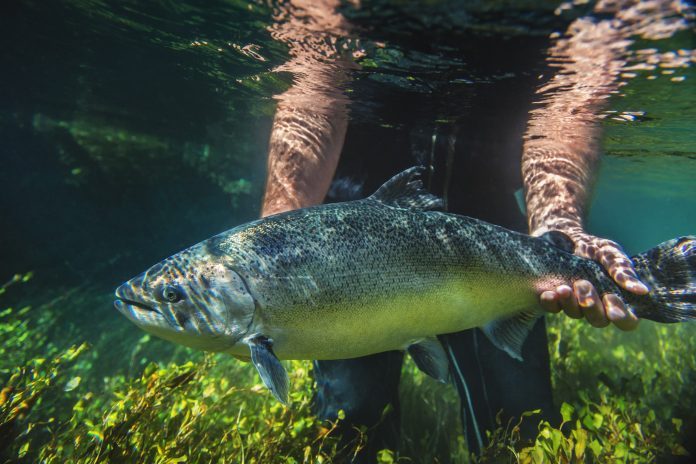8000 King salmon are under the spotlight in new $8 million finfish research facility.
The Cawthron Institute’s new finfish research facility, a state of the art lab with the capacity to hold thousands of fish, is hoping to reduce the impact of salmon farming on the environment by changing how they feed their fish according to tvnz.
Less feed
The facility opened earlier this month in Nelson, South Island of New Zealand and up to 8000 king salmon are currently being monitored by scientists. The fish are put in different conditions in tanks which are heated, oxygenated at different levels. Researchers hope it will encourage better results in terms of feed efficiency, leading to more more economical and environmental ways to farm.
Its believed that by saving even a small amount, it save the industry millions of dollars.
“If we know the nutritional requirements of the king salmon species, they’ll eat less as a result. That’s a lesser impact of the environment and a better outcome,” said Grant Rosewarne of New Zealand King Salmon, the country’s leading producer of the fish to the publication.
Talking to Stuff, aquaculture scientist, Kevin Heasman, said despite a great deal of research on Atlantic salmon, not much was known about King salmon.
Continents apart
“It’s a common misconception that they’re basically the same, a salmon is a salmon; but they’re a whole different genus. King salmon are from the Pacific, they’re continents apart,” he said.
Cawthron’s general manager of aquaculture, Serean Adams, said the research would go hand in hand with NZ’s rapid industry growth.
“Feed is the largest cost of farming fish so knowledge about food conversion efficiency and the underlying biological processes that determine it is extremely important,” she said.


